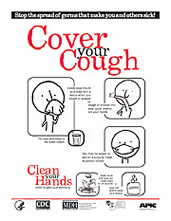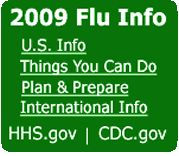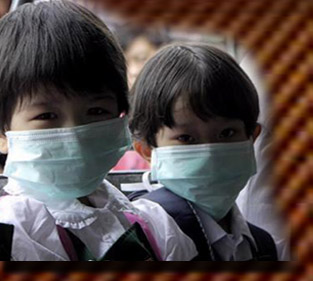....H1N1 INFLUENZA PREPAREDNESS
Residents are also encouraged to take precautions: covering your mouth when coughing, sneezing and washing hands frequently and properly. These routine precautions can go a long way in protecting your health and the health of those around you. Only schools with high numbers of high-risk students or students getting the flu should actually consider closure. The CDC’s schools closure recommendations balance the need to contain the spread of the H1N1 swine flu against the disruption to education that school closures can bring. INDIVIDUALS ARE ENCORAGED TO TAKE THE FOLLOWING STEPS TO STOP THE SPREAD OF INFLUENZA AND OTHER ILLNESSES • Stay home when you are sick to avoid spreading illness to friends and co-workers or students.If you’re sick with a cold or the flu, stay home. Avoid close contact with those who are sick. Conversely, those who have a cold or flu should not mingle with others.The flu typically lasts a week to 10 days. • Avoid touching the mouth, nose and eyes with hands. • Cough or sneeze into your elbow or a tissue and properly dispose of used tissues. • Wash your hands thoroughly with soap and warm water or use an alcohol-based hand sanitizer to get rid of most germs and avoid touching your eyes, nose and mouth.Frequent hand washing also can prevent the spread of colds and flu. Wash hands for at least 20 seconds with plenty of soap and warm water. If soap and water are not available, use alcohol-based gel or wipes. • Stay healthy by eating a balanced diet, drinking plenty of water and getting adequate rest and exercise. Some of the CDC recommendations are: • If flu is suspected, the affected person should contact a health-care worker as soon as possible. People at high risk (due to pregnancy, or medical conditions such as asthma or diabetes) should take antiviral medication immediately to reduce risk of prolonged or dangerous illness. The American Red Cross and the Centers for Disease Control and Prevention (CDC) are recommending people prepare for a potential flu outbreak by stocking extra food, water and supplies at home. That will reduce the need to go out should H1N1 flu become more widespread, thereby limiting potential for exposure to the virus. If a person does get sick and has extra supplies on hand, they will help reduce the spread of the flu by staying home. The Red Cross also recommends you take this opportunity to be prepared for any disaster by getting a preparedness kit, making a plan and being informed. This information in PDF format | This information en Español |
||
TEL- 619-427-4111 Email - Health@infooption.com Salud+HealthInfo is for information and educational purposes only. You should not rely on this information as a substitute for personal medical attention, diagnosis or hands-on treatment. If you are concerned abut your health or that of a child, please consult your family's physician or health provider immediately and do not try to diagnose yourself. Copyright © 2001-2009 Info Option Network |
||
Bienvenido a la primer revista dedicada al cuidado de la salud
 info
info
The first, the best & the only English & Spanish Magazine in San Diego, California
| H1N1 INFLUENZA PREPAREDNESS | |
| Good news: The vaccine for seasonal flu is available now! | |
Printable Materials for Promoting Good Health Habits
More information |
|
| FLU SEASON | |
| GRIPE > EN ESPAÑOL | |
| Pandemic Influenza | |
| Questions About Flu Shots? | |
| Kids Are In Danger With Cough and Cold Medications | |
| Over the Counter Cold Medicines | |
| FLU OTC Cold Medicine recommendations from The American Academy of Pediatrics | |
| RESPIRATORY INFECTIONS | |
| Asthma | |
| Asthma Management | |
| Manage Your Asthma and Score | |
| COPD Chronic Bronquitis | |
| Tuberculosis | |
|



